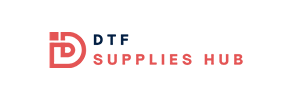DTF gangsheet builder is redefining how brands scale custom apparel by consolidating multiple designs on a single sheet to maximize fabric use and speed up production. For operators, this approach improves DTF printing efficiency and enhances gangsheet printing accuracy, helping print shops achieve higher throughput without sacrificing quality. By simplifying setup, reducing reprints, and stabilizing color across batches, it directly supports greater print shop productivity. This technology aligns with DTF workflow optimization and sets the stage for DTF workflow automation across orders, designed for scalable batch production. With templates, validation checks, and smart layout rules, teams gain predictable turnaround times and better fabric utilization.
Beyond the name, the core idea is a layout engine that groups multiple artworks onto one transfer sheet, optimizing space and alignment. Think of it as smart tiling and board-level planning that reduces waste while keeping margins and color consistency intact. Design teams can reuse templates and pre-validated configurations to accelerate future jobs, a hallmark of efficient DTF workflows. As the sheet is prepared, the system checks for conflicts, ensures safe printing areas, and guides operators through a smoother transition from design to finished product. In practice, shops gain more predictable run times and greater flexibility to handle diverse orders without sacrificing quality.
DTF gangsheet builder: Driving DTF workflow optimization and print shop productivity
A DTF gangsheet builder reshapes how designs are arranged on transfer films by intelligently tiling multiple graphics onto a single sheet. This approach directly supports DTF printing efficiency and gangsheet printing, enabling more garments per batch and significantly reducing waste. By optimizing layout and margins, shops can shorten setup times and keep color consistency across designs, delivering faster turnaround without compromising quality.
Beyond the mechanical benefits, the tool acts as a catalyst for a holistic workflow. Automated layout decisions, bleed management, and pre-set color profiles streamline the order-to-production process, contributing to improved print shop productivity. When used as part of a broader strategy for DTF workflow automation, it helps teams work smarter—lowering misprints, minimizing downtime, and freeing operators to focus on customer-driven outcomes.
Maximizing DTF printing efficiency with gangsheet printing and automation
The core advantage of gangsheet printing lies in the throughput gains: more designs fit on fewer sheets, which reduces the number of print runs and speeds up changeovers. This translates into tangible DTF printing efficiency gains, as automated placement reduces human error in scale and margins while cutting waste from offcuts and unnecessary media usage.
In practice, adopting gangsheet printing and automation helps print shops tighten control over the production line. Templates, centralized color management, and batch processing become standard, boosting print shop productivity and delivering consistent results across orders. When integrated with ERP or production management systems, the workflow becomes more predictable, enabling better planning, reduced bottlenecks, and measurable improvements in DTF workflow optimization.
Frequently Asked Questions
How does a DTF gangsheet builder boost DTF printing efficiency and improve gangsheet printing in a busy print shop?
A DTF gangsheet builder automatically lays out multiple designs on a single transfer sheet, maximizing fabric utilization and reducing waste. It streamlines setup, minimizes placement errors, and speeds changeovers. With bleed/margin handling, color profile consistency, and template-driven batch processing, it keeps designs aligned across jobs, delivering faster turnaround and higher overall DTF printing efficiency.
What features should I look for in a DTF gangsheet builder to maximize print shop productivity and support DTF workflow automation?
Key features include automatic layout and tiling, bleed and safe-area management, robust color management, batch processing and reusable templates, and validation checks. Integration with production software (ERP/PMS) enhances automation. Together, these capabilities reduce setup time and errors, improve throughput, and enable a more automated, template-driven DTF workflow that boosts print shop productivity.
| Aspect | Key Points |
|---|---|
| Demand for DTF printing | – Growing demand for fast, reliable, high-quality DTF printing for custom apparel at scale. – Glossy printers and vibrant inks alone don’t guarantee efficient production; delays often occur at setup, sheet preparation, or when multiple designs contend for media. |
| The problem and the solution | – Without optimization, fabric waste and lengthy setups slow production. – A DTF gangsheet builder arranges multiple designs on a single sheet to maximize fabric usage, reduce waste, and speed turnaround. |
| Understanding the value of gang sheets | – Gang sheets combine several designs on one production sheet for transfer printing and post-print cutting. – Benefits: higher fabric utilization, reduced setup time, and more consistent color and layout. |
| DTF printing efficiency & automation | – Efficiency blends throughput, accuracy, waste reduction, and turnaround time. – A gangsheet builder can yield a 2x productivity lift by transforming daily workflows; fewer reprints, less downtime, and more consistent results. |
| How a DTF gangsheet builder works | – Automatic layout and tiling that places designs on a single sheet while preserving margins. – Bleed/safe-area management; color integrity and profiles; batch processing and templates. – Validation and error checks to catch overlaps and incompatible files before printing. |
| Impact on print shop productivity | – Fewer production runs and faster setup reduce downtime. – Faster changeovers through templates. – Fewer errors and reprints; improved inventory planning. |
| DTF workflow optimization | – Align design workflows with gang sheet considerations and consistent color management. – Centralize templates, monitor throughput, and train staff for confident batch production. |
| Implementation tips for ROI | – Start with a pilot, measure before/after (sheets/hour, setup time, waste, reprints). – Track cost savings and integrate with ERP/PMS. – Ensure scalability and maintain templates; avoid common pitfalls like underestimating prep time. |
| Real-world scenarios | – Shops consolidating orders into larger batches enjoy faster output and cohesive color across items. – Agencies updating artwork mid-cycle can reflow designs onto existing templates, reducing waste and speeding approvals. |

